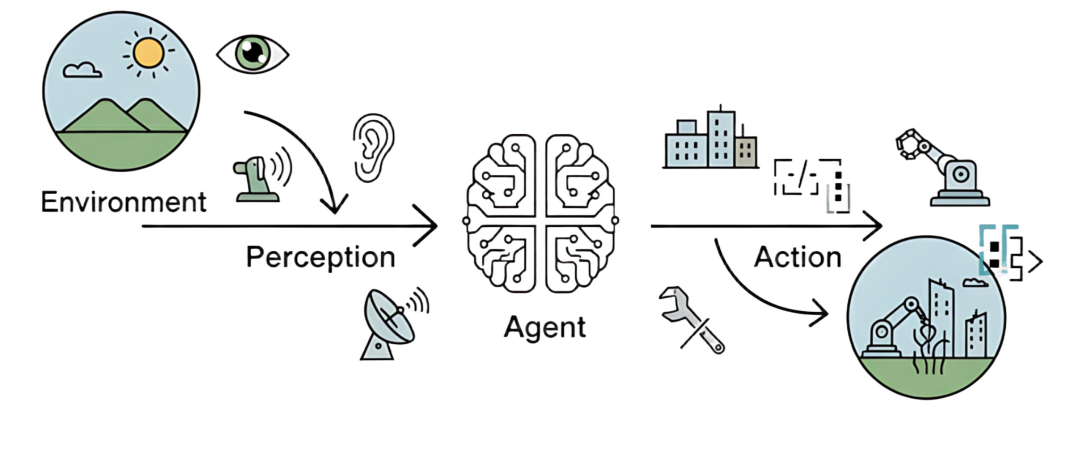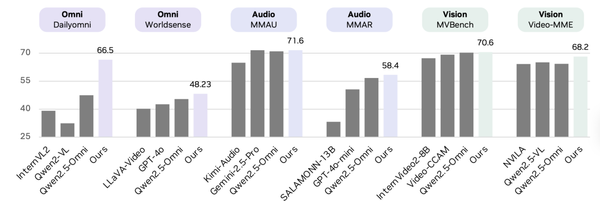A Comprehensive Beginner’s Guide to AI Agents

# Chapter 1: First Encounter with Agents
Welcome to the world of **Agents**!
In this age where *Artificial Intelligence* is reshaping industries worldwide, the **Agent** has emerged as one of the core concepts driving technological change and application innovation. Whether your aim is to become a researcher, an engineer, or simply to grasp cutting-edge tech, mastering agents is a crucial step.
In this chapter, we’ll explore fundamental questions:
- **What is an agent?**
- **What are its main types?**
- **How does it interact with its environment?**
By the end, you'll have a strong foundation for deeper study.

*Figure 1.1 — Basic perception–action loop between an agent and its environment*
Open-source repository:
[https://github.com/datawhalechina/Hello-Agents](https://github.com/datawhalechina/Hello-Agents)
---
## 1.1 What is an Agent?
An **agent** in AI is:
> **Any entity that can perceive its environment through sensors and autonomously take actions via actuators to achieve specific goals.**
**Key elements:**
- **Environment** – External world the agent operates in
*(Road traffic for an autonomous car; financial market for a trading algorithm)*
- **Sensors** – Cameras, microphones, radar, APIs
- **Actuators** – Robotic arms, steering wheels, software APIs
- **Autonomy** – Independent decision-making based on perception and internal state
The **closed loop** from perception to action — illustrated in Figure 1.1 — underpins all agent behavior.
---
### 1.1.1 Agents from a Traditional Perspective
Before the rise of **Large Language Models (LLMs)**, AI pioneers built “traditional agents,” evolving from:
1. **Simple Reflex Agents**
- Rule-based *condition–action* logic
- Example: Thermostat — “IF temp > set value → Activate cooling”
- **Limit:** No context or memory

*Figure 1.2 — Decision logic diagram of a simple reflex agent*
2. **Model-Based Reflex Agents**
- Maintain an internal *world model* for unseen state
- Example: Autonomous car keeps track of surroundings even when sensors lose sight
3. **Goal-Based Agents**
- Plan actions to achieve desired states
- Example: GPS navigation finds optimal routes using search algorithms (e.g. A*)
4. **Utility-Based Agents**
- Assign utility value to outcomes and maximize satisfaction
- Handle multiple, potentially conflicting goals
5. **Learning Agents** *(Reinforcement Learning)*
- Improve via experience and rewards
- Example: AlphaGo discovers winning strategies without explicit instructions
**Evolution:**
From thermostats → cars with internal models → planners → decision-makers → learners — building the bedrock for today’s intelligent agents.
---
### 1.1.2 LLM-Driven New Paradigm
**LLM agents** differ fundamentally:
- **Traditional agents:** Explicitly programmed, deterministic, human-built knowledge models
- **LLM agents:** Implicit world models via large-scale pretraining, emergent capabilities, flexible handling
**Advantages:**
- Process natural language commands directly
- Plan, reason, and adapt dynamically
- Invoke tools autonomously
Example: An “Intelligent Travel Assistant” taking *“Plan a trip to Xiamen”* and autonomously:
1. **Plan** subtasks
2. **Call APIs/tools** for missing info
3. **Adjust** itinerary based on constraints
---
### 1.1.3 Agent Classifications
**By Decision Architecture:**
- **Simple Reactive Agent**
- **Model-Based Agent**
- **Goal-Based Agent**
- **Utility-Based Agent**
- **Learning Agent** *(meta capability)*
**By Time/Reactivity:**
- **Reactive** – Fast, low-latency
- **Deliberative** – Plan-focused
- **Hybrid** – Combine speed + foresight
**By Knowledge Representation:**
- **Symbolic AI** – Explicit rules, explainable but brittle
- **Sub-symbolic AI** – Neural networks, robust intuition but opaque reasoning
- **Neuro-Symbolic AI** – Merge perception (fast) and reasoning (slow)
---
## 1.2 Composition & Operating Principles
### 1.2.1 Task Environment — The PEAS Model
Describe agent environments via:
- **P**erformance measure
- **E**nvironment
- **A**ctuators
- **S**ensors
Travel assistant example:
Partial observability, stochastic changes, multi-agent influences, sequential/dynamic environments.
---
### 1.2.2 The Agent Loop
Agents interact via a **continuous loop** *(Figure 1.5)*:
1. **Perception** – Gather observations via sensors/APIs
2. **Thought** – Reason & plan steps; choose tools
3. **Action** – Invoke actuators/tools to change environment
4. **Observe** – Receive feedback → repeat loop
---
### 1.2.3 Structured Interaction Protocols
LLM agent outputs often follow:
Thought: [Reasoning]
Action: function_name(arg_name="value")
Observations are formatted natural language descriptions based on tool/API output.
Example:
Thought: Need to check Beijing weather
Action: get_weather("Beijing")
Observation: Sunny, 25°C, light breeze
---
## 1.3 Hands-On: Build Your First Agent
**Goal:**
> “Check today’s Beijing weather, then recommend suitable attractions.”
**Steps:**
1. **Install dependencies:**
pip install requests tavily-python openai
2. **Design system prompt** for role, toolset, action format.
3. **Implement tools**:
- `get_weather(city)` via wttr.in API
- `get_attraction(city, weather)` via Tavily API
4. **Create LLM client** *(OpenAI-compatible)*
5. **Run action loop:**
- Maintain `prompt_history`
- Parse actions from LLM output
- Execute tool calls
- Append observations
---
**Key Output Example:**
**Loop 1:**
`get_weather("Beijing")` → *Sunny, 26°C*
**Loop 2:**
`get_attraction("Beijing","Sunny")` → *Summer Palace, Great Wall*
**Loop 3:**
`finish(...)` → *Final travel recommendation text*
---
### Agent Capabilities Demonstrated:
- **Task decomposition**
- **Tool invocation**
- **Contextual reasoning**
- **Result synthesis**
---
## 1.4 Collaboration Modes
### 1.4.1 Agents as Developer Tools
Examples:
- **GitHub Copilot**
- **Claude Code**
- **Trae**
- **Cursor**
They integrate into workflows to assist coding, automate tasks, and increase efficiency.
---
### 1.4.2 Agents as Autonomous Collaborators
Delegated high-level goals → autonomous execution until completion.
Frameworks:
- **BabyAGI**
- **AutoGPT**
- **MetaGPT**
- **CrewAI**
- **AutoGen**
- **CAMEL**
- **LangGraph**
Varied architectures: single-loop agents, multi-agent teams, advanced control flows.
---
### 1.4.3 Workflow vs Agent
**Workflow:**
Predefined static sequence of steps (flowchart logic)
**Agent:**
Dynamic, goal-driven, reasoning-capable, adapts to environment changes
Example: Travel assistant reasons differently for sunny vs rainy days — not hard-coded.
---
## 1.5 Summary
We covered:
- **Definition & evolution** — from simple reflex to learning agents
- **LLM paradigm** — flexibility, tool use, reasoning
- **Operating loop** — perception, thought, action, observation
- **Hands-on build** — practical agent implementation
- **Collaboration modes** — tool-assist vs autonomous
- **Workflow vs agent** — static vs adaptive automation
**Next chapter:**
Explore the **history** of agents and how they evolved.
---
**References**:
[1] Russell, Norvig. *Artificial Intelligence: A Modern Approach*, 4th ed., 2020.
[2] Kahneman, D. *Thinking, Fast and Slow*, 2011.



